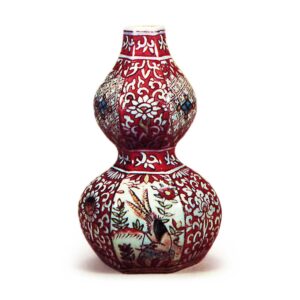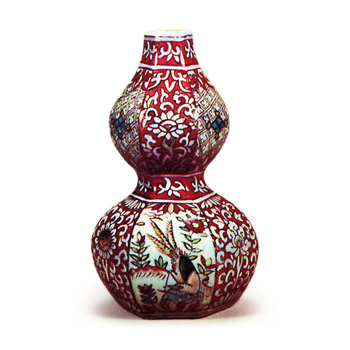
The word “koakae” in the Chinese language may seem to mean “old red glaze” or “early red glaze,” but it originally meant “old porcelain” and was used to distinguish it from Nanjing red glaze of the early Qing dynasty, which was introduced later. The period of time is approximately from the Ming dynasty’s Chenghua period (1465-87) to the Jiajing and Wanli periods (1522-1619), and although it was made in Jingdezhen, it was not produced by the government kilns, but by private kilns specializing in exports. The reason is that this type of red enamel ware has not survived in China, but is widely found in Indonesia, the Philippines, Indochina, and Japan. The base is white porcelain clay covered with a milky white glaze, and the workmanship is not at all inferior. The design is mainly in three colors (red, green, and yellow). The patterns include flowers, birds, figures, and fish, and are usually surrounded by cobblestone patterns, arabesques, and “瓔珞なぎ” (a ribbed roof). However, there is no such red-painting with a ground pattern in underglaze blue. This is one of the characteristics of old akae.
There are some examples with inscriptions of “Seondeok” or “Seika” on the back of the takadai, but these are not to be believed. In the past, this type was called “Seonde akae” (red painting).



